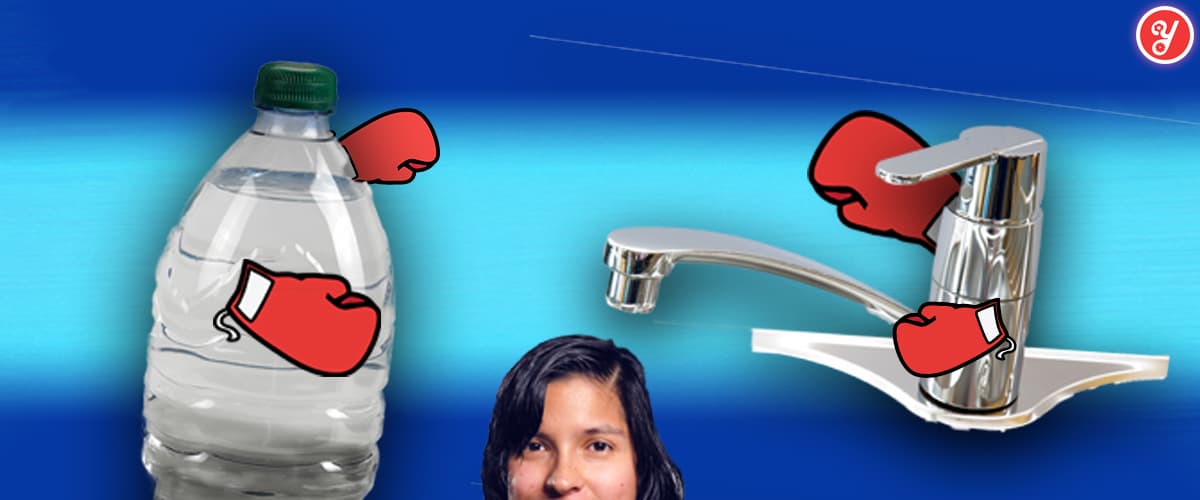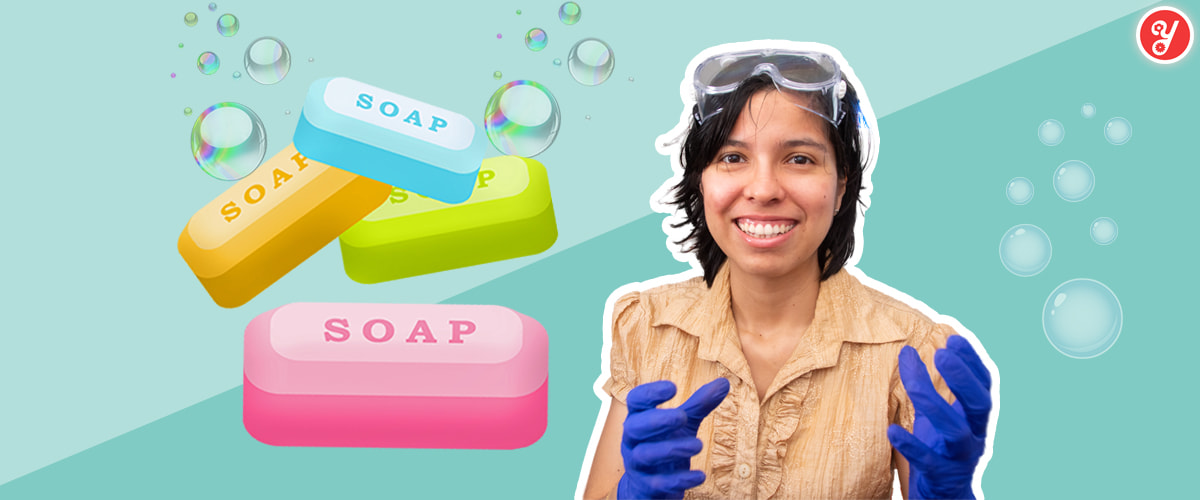Yoguely is reader-supported. When you buy through links on our site, we may earn an affiliate commission. Learn more
Should You Filter Your Water? (How to Test Water)
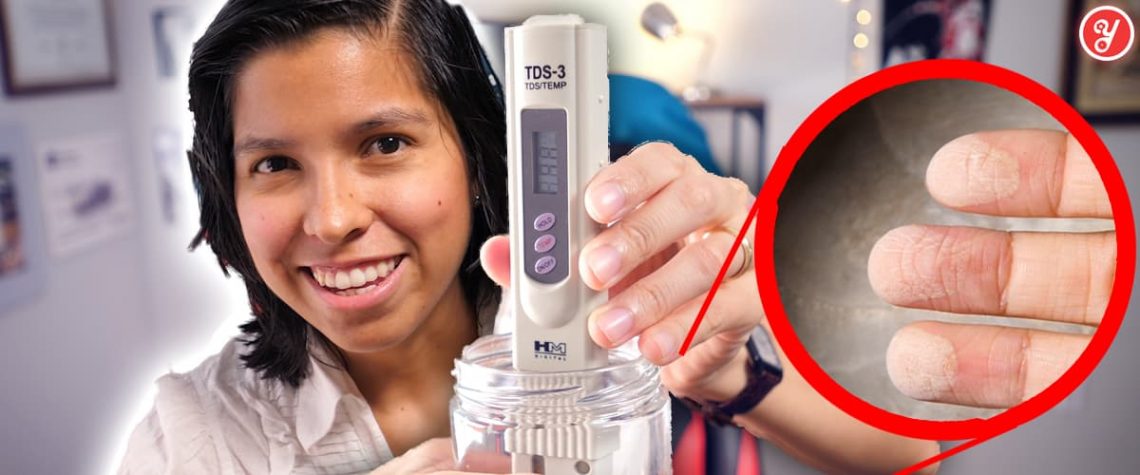
Today I’m going to show you why you NEED to filter your tap water.
This is the first part of my complete guide to healthy drinking water.
In this series we are going to start by exploring what’s in your tap water.
So, if you’re ready to improve your health with safe drinking water, this guide is for you.
I’m your host Aida Yoguely. Let’s get started.
Why Am I Researching Healthy Drinking Water?
Welcome back my people!
So, I just watched a very interesting documentary called “The Devil We Know”. Which opened my eyes on some toxic chemicals in the water.
You know what’s scary about toxins in your water? You never know what the effect might be on you.
You might hope that you’ll develop super powers, but you’re more likely to get cancer.
Now at this point I’m not sure what other contaminants in my drinking water I need to avoid. I also wonder if there is even a way to diminish my exposure to them.
But I am an engineer — La Ingeniera Yoguely. And I’m always trying to find ways to make things better.
So I will use the principles of science and the world’s knowledge to figure out the most effective way to drink healthier water.
I analyze scientific articles and conduct extensive research from reputable sources like: the Center for Environmental Health (CEH), National Institutes of Health (NIH), and Environmental Protection Agency (EPA).
By the end of this research, you’re going to know exactly which is the best water to drink for your health.
Plus, whatever the best answer may be, I’ll apply that knowledge. I’ll buy whatever I need to get, and make a change in my life. And of course, share the results with you.
What Is in Your Drinking Water?
Drinking water is a funny thing. We can’t go more than 3 days without it and yet, we are making it easier for companies to dump waste into streams.[13] Sounds like we need to get our priorities checked.
Those streams then flow in all kinds of directions. From the surface to underground, flowing to the oceans, evaporating, traveling as clouds around the world and then later falling as rain. Eventually making up the water that flow out of your tap.
Since tap is the simplest way for many of us to get our drinking water, I wondered: what’s in our my tap water?
Microbes in Your Water
When I was growing up, there was one simple treatment we would do to our tap water — boiling. We would boil the water for at least a minute before drinking it. This is because there could be bacteria and viruses in the tap water.
How could that be?
Well, I did some digging and turns out that first fresh water is taken from sources like lakes and streams. Right after, the water passes through treatment plants before starting the long journey to your tap. Along the way, the water is susceptible to all sorts of contamination from the environment and our water pipes.[1]
The bacteria in water pipes could be harmful, it could be harmless, or it could even good for us. Either way, when you boil water, the extreme temperature kills all the bacteria and viruses in it.[2]
Salts, Minerals, and Pollutants in Your Water
But have you ever left tap water boiling for too long? If you do, you’ll notice that what’s left is a chalky, powdery substance. These are all of the solids that were dissolved in the water.
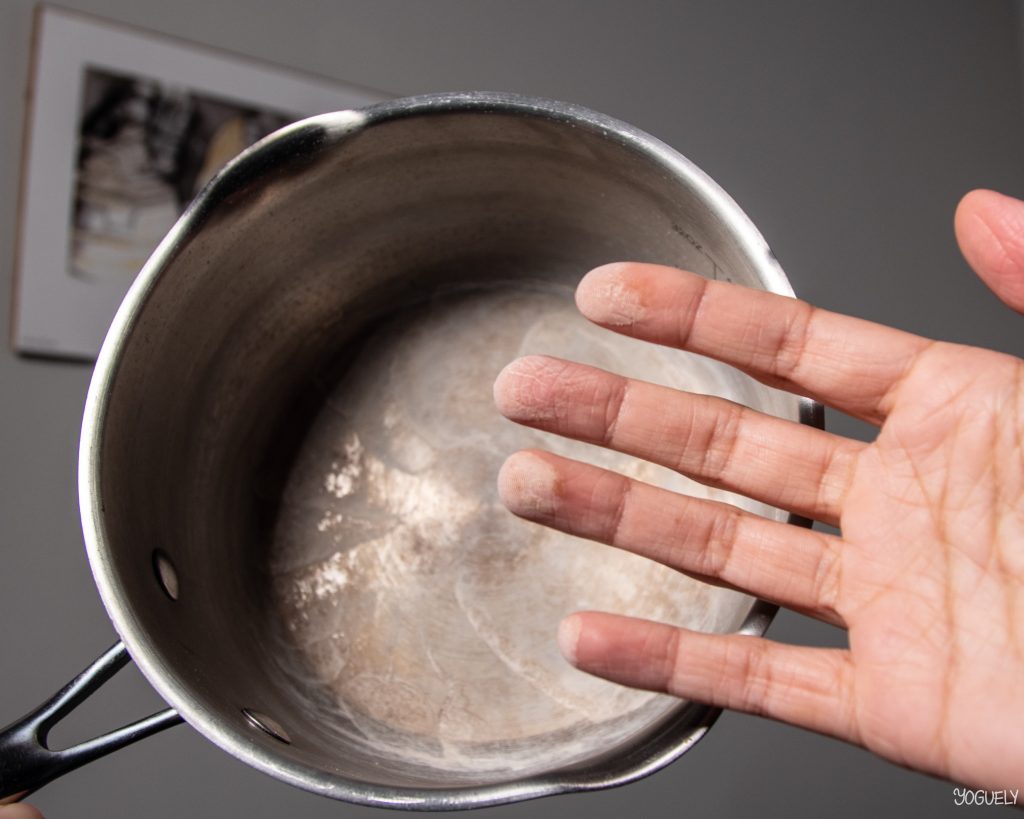
Most of it is limescale which is composed of calcium and magnesium. Both of which are minerals necessary for our diets.[3],[4]
You can find limescale spots in other places where hard water has evaporated. For example: on your dishes, toilet bowl, and bathtub.
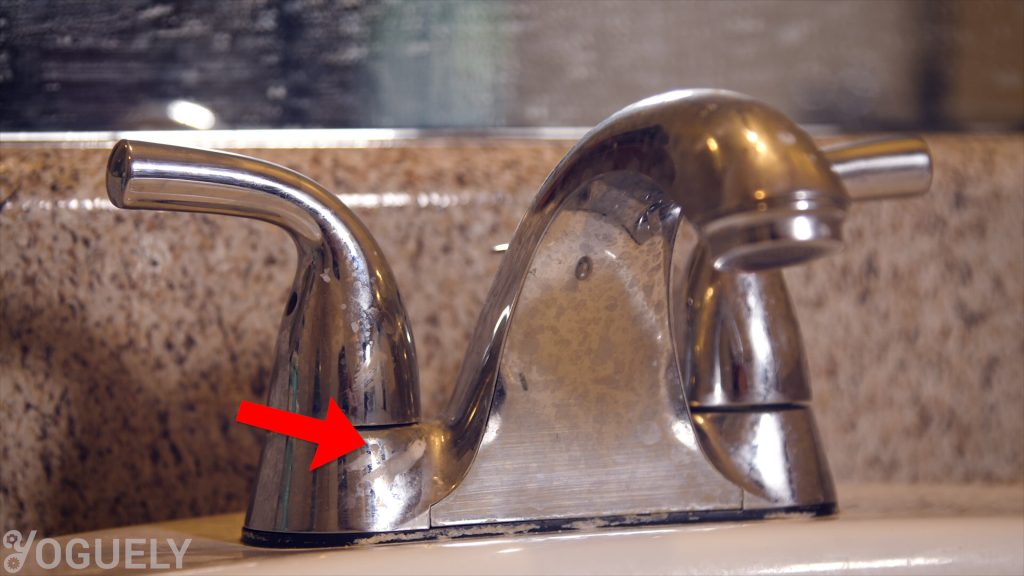
The total ionized solids dissolved in your water is known as TDS. TDS is a concentration measurement. It tells you how much milligrams of solids there are per liter of water.
In the US, if your water has less than 60 mg/l, which is equivalent to 60 parts per million (abbreviated as ppm), then you’ve got “soft water”. If your TDS is more than 121 mg/l (121 ppm) then you’ve got “hard water”.[5]
I like to think of hard water as the culprit for making things “hard” to clean off.
So I wondered, do I have soft water or hard water?
How to Tell Whether You Have Soft Water or Hard Water
A super quick way to test whether you’ve got soft or hard water is using one of these TDS testers. You can find cheap TDS testers here (paid link) or check out some with faster shipping (paid link).
I’ve picked up one myself so, how about we test my tap water right now?
First remove the cap, turn the meter on, and dip the sensor 2 inches in to the water. Dipping any further would damage the sensor since the electronics in the top isn’t water sealed.
Next we just got to wait about 10 seconds for the reading to stabilize. And viola, the TDS reading for my tap water is 98 ppm.
So to find out if the water is hard or soft, compare your TDS reading with these ratings:
- Soft Water < TDS 60 mg / l (60 ppm)
- Hard Water > TDS 121 mg/ l (121 ppm)
Therefore, my water lies between soft and hard water.
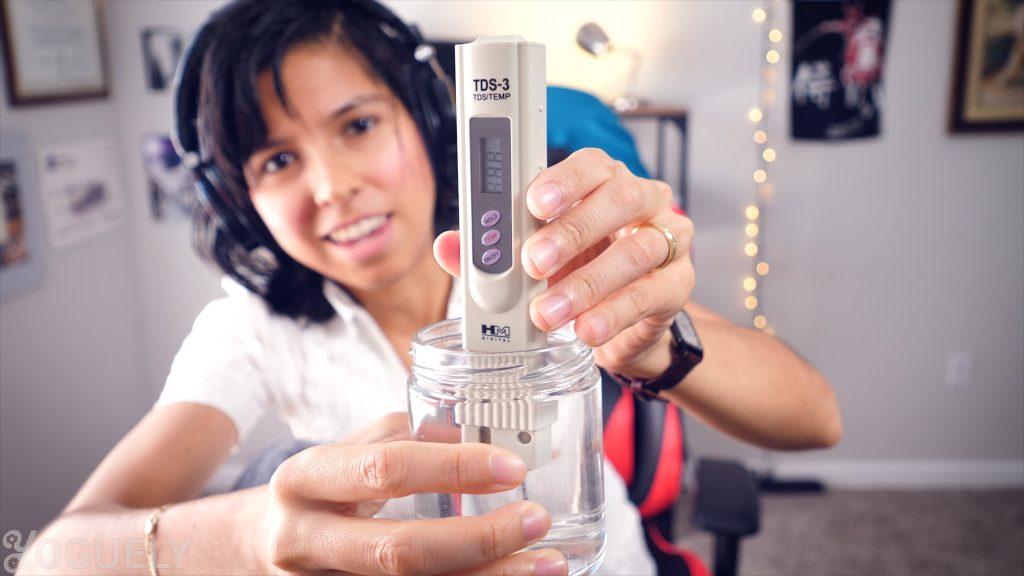
If you have a TDS tester, go ahead and tweet me (@Yoguely) a photo of your reading and what city you are in. Would be really interesting to see the differences around the country.
Purified water on the other hand would have none of these impurities. Ideally it would be just pure H2O, without any contaminants.
But here is where it gets interesting, there are many more chemicals in here besides calcium and magnesium. Some of them are pollutants. Substances that can cause harm to the environment and that are toxic for your body.
Why Are There Toxins in Our Tap Water?
Hold on, why are there toxins in our tap water? How is that even allowed?
Let’s go back to the water treatment plant. There the local municipality processes fresh water to meet certain standards. The Environmental Protection Agency (EPA), an agency of the US Federal government, sets those standards.
The EPA is like the police of the environment; they enforce the law[14] but they can also make the rules.[15]
At the plant, the treatment process involves adding certain chemicals. They add chlorine to destroy biological toxins. And they add fluoride in most of the US to improve dental health.[6] The pH level, that is how acidic or basic the water is, is also adjusted.
Systems are required to remove or inactivate 99.99% of viruses, which would include coronavirus during the current COVID-19 pandemic.[7]
By the end, the treatment removes certain contaminants completely, which is fantastic. For other pollutants though, the treatment plant only reduce their levels to meet the EPA’s acceptable maximum contaminant level (MCL).[7]
What that means is that, water treatment plants do not completely eliminate contaminants that have no positive function or nutritional benefit for our diets. Instead the water treatment plants allow those contaminants to persist in controlled quantities in our tap water.
Thousands of Pollutants in Tap Water Go Unregulated
In the EPA’s Secondary Standards for Drinking Water, the EPA lists non-mandatory standards for contaminants. Which are guidelines the EPA sets but don’t enforce.
What is the acceptable TDS for tap water?
One of which is the recommended limit of 500 ppm for the level of TDS in the water.[8]
Phew! If you recall, my tap water has 98 ppm. Luckily it falls below the maximum (recommended) contaminant level of 500 ppm.
The scariest part is that thousands of chemicals are out there flowing in streams of fresh water. Many of which are unregulated because the EPA doesn’t know enough about their hazards.[9]
In other words, the EPA allows unknown chemicals in drinking water until proven harmful, rather than banning them until proven safe.
Contaminants in Water Can Have Detrimental Effects on Our Body
Take for example, one infamous group of man-made group of chemicals — Per- and polyfluoroalkyl substances (PFAS). These you really need to stay away from.
Out of 5,000 PFAS, thus far 2 have been studied extensively, PFOA and PFOS. Both are persistent chemicals. Meaning that whenever they enter the environment and your body, it accumulates over time. The worst part is that they never break down.
Once in your body, they can have adverse effects on your health. They attack your immune system, your development and reproduction, and even leads to cancer.[10]
These are the toxic chemicals that I learned about in the documentary called “The Devil We Know” which I mentioned earlier in the blog.
I believe that the purpose of food and drink is to give our bodies the nutritional goodness to live. So, if it isn’t an essential nutrient for life, it shouldn’t be in our tap water.
In the meantime, it’s like we are all in one big experiment. As an engineer, I must say, that’s not the way you do science.
I don’t know what those chemicals will do to me. But I’m not willing to find out!
In the meantime, it’s like we are all in one big experiment. Before you know it, the last headline on the news will be “A study of the effects of really hard to say man-made chemicals on a population of 7.53 billion leads to max-extinction of the human race.”
As an engineer, I must say, that’s not the way you do science.
Is Tap Water Safe to Drink?
Many people assume that tap water is the same as healthy drinking water, i.e. water that is actually safe to consume. But what makes tap water safe to drink?
According to the EPA, it’s water that meets the legal limits for certain contaminants. The EPA set’s forth those limits in their Drinking Water Regulations.[11]
Well that’s a starting point we can use as a criterion for healthy drinking water. Now we need to compare your tap water to the regulations.
The Contaminants in Your Drinking Water
Fortunately, the U.S.A. has the Safe Drinking Water Act (SDWA) that gives us the right to know what is in our water. Also to know where it is coming from, and whether there are water quality problems.[12]
You can check your drinking water quality by reading the Consumer Confidence Report (CCR) for your area.
For the longest time I’ve been wanting to dig into what the contamination in my tap water looks like. Now we are going to find out together!
Ok here is the CCR website.
I had better luck googling the CCR report for my state than going through the EPA website. Go figure.
So, once you got your CCR report, compare those values with the EPA’s maximum contaminant level (MCL). The EPA lists the MCL’s on their National Primary Drinking Water Regulation. And if you are feeling extra strict about your safety, compare your values with those from the World Health Organization and the European Union. They’ve got tighter standards.
Mmm that is a lot of work.
Sure is! That’s why I’m going to show you an easy way to get a good idea of where your water stands.
Are the Contaminants in Your Tap Water BREAKING Health Guidelines?
The Environmental Working Group (EWG) has a sweet database. It tells you exactly how many contaminants you have in your tap water that are breaking health guidelines.
Only problem is that the database is outdated, with information only from 2010 to 2015.
Let’s take a look anyways.
For my city there are 9 contaminants above health guidelines. Including chlorate which does harm to the thyroid, chloroform and uff, many others associated with cancer risk.
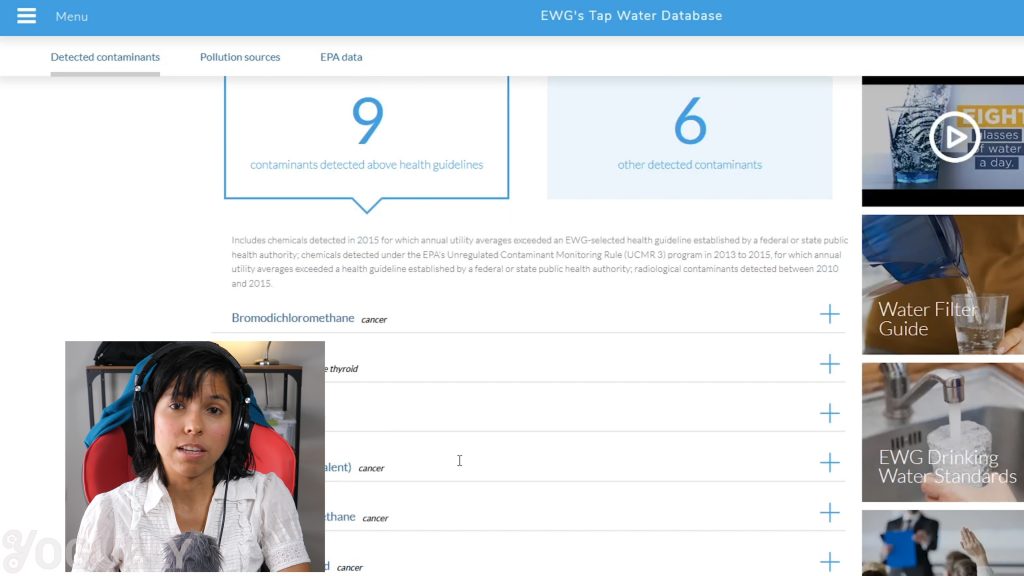
Holy cow.
Plus, my tap water has 6 other detected contaminants like Bromide which becomes toxic when combined with chlorine.
Yikes!
Fluoride is in the water of course. And Strontium which accumulates in the bones and can harm bone health.
Ay ya yai!
We know that tap water has been keeping me alive in the short-term. So far. From this information we can derive that the long-term prospects are not good if I want to live a long healthy life.
And this is not taking in to account all those unknown and unregulated chemicals, we talked about earlier. The ones that the treatment plants aren’t testing for in our water.
Also, although there has not been evidence yet of coronavirus spreading through drinking-water,[16] you’ll want to be prepared in case treatment plants fail to inactive and remove COVID-19 from the water.
So, if you want higher quality water, you will need to get your hands-on filtered water. A popular option is water in a bottle.
But so many brands market bottled water to us. Are any of them worth it in the long run?
Find out later in this blog whether bottled water is an efficient way to drink healthier water.
See also whether it is worth making distilled water at home, or check out a better alternative reverse osmosis, and how easy it is to install a RO water filter system at home.
Now I would love to hear from you: How many water contaminants are off the charts in your area?
Or what kind of filtering have you been doing to your tap water before drinking it?
If you have any questions, let me know in the comments below. Or join the discussion in the Yoguely Community Forum.
I’m Aida Yoguely. Thanks for learning with me today. And I’ll see you next time. That’s all folks!
To stay tuned, join our newsletter and get the latest content straight to your inbox.
Video
Be sure to subscribe and hit the notification bell to stay tuned for the latest videos.
References
1. ^ Yoksoulian, L. (2019, March 29). “Researchers develop model to show how bacteria grow in plumbing systems”. Science X. Retrieved 12 September 2019.
2 .^ “Boil Water Response – Information for the Public Health Professional”. New York State. (2018, November). Retrieved 12 September 2019.
3. ^ “Calcium: Fact Sheet for Health Professionals”. National Institutes of Health. (2019, July 9). Retrieved 12 September 2019.
4. ^ “Magnesium: Fact Sheet for Health Professionals”. National Institutes of Health. (2019, July 9). Retrieved 12 September 2019.
5. ^ “Hardness of Water”. The United States Geological Survey. Retrieved 12 September 2019.
6. ^ “Community Water Fluoridation – 2014 Water Fluoridation Statistics”. Center for Disease Control and Prevention. (2016, August 16) Retrieved 12 September 2019.
7. ^ “Ground Water and Drinking Water – National Primary Drinking Water Regulations”. United States Environmental Protection Agency. Retrieved 12 September 2019.
8. ^ “Secondary Drinking Water Standards: for Nuisance Chemicals”. United States Environmental Protection Agency. Retrieved 12 September 2019.
9. ^ “Teflon Toxin Safety Level Should be 700 Times Lower Than Current Guideline”. The Intercept. (2019, June 18) Retrieved 12 September 2019.
10. ^ “PFOA, PFOS and Other PFASs – Basic Information on PFAS”. United States Environmental Protection Agency. Retrieved 12 September 2019.
11. ^ “Drinking Water Requirements for States and Public Water Systems – Drinking Water Regulations”. United States Environmental Protection Agency. Retrieved 12 September 2019.
12. ^ “Understanding the Safe Drinking Water Act”. United States Environmental Protection Agency. (2014, June). Retrieved 12 September 2019.
13. ^ “Trump’s EPA Made It Easier for Coal Plants to Pollute Waterways”. Scientific American. (2018, September 24). Retrieved 24 September 2019.
14. ^ “Criminal Enforcement: Special Agents”. United States Environmental Protection Agency. Retrieved 24 September 2019.
15. ^ “The Basics of the Regulatory Process”. United States Environmental Protection Agency. Retrieved 24 September 2019.
16. ^ “Coronavirus and Drinking Water and Wastewater”. United States Environmental Protection Agency. Retrieved 14 May 2020.
- Why Helicopter Money Is Inflationary - 2021-10-09
- How Interest Rates Affect Inflation - 2021-10-08
- How Long Has Inflation Existed? - 2021-10-01

